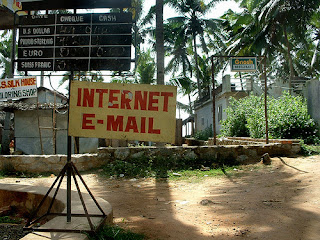 |
| So many networks! Photo from socialmediahq. |
1) You don't have to be everywhere to be successful. Thinking about Facebook, Twitter, Tumblr, Pinterest, Google+, LinkedIn, Instagram, Digg, etc., etc. can be really overwhelming. I suggest that clients start on one or two channels - maybe Facebook and Twitter. Most smaller organizations should set a goal of having a presence on three channels at the most. Any more, and they are going to be completely overwhelmed. Here's more information about how to decide which social media channels are right for you.
2) Social Media is NOT a strategy, it helps you execute your strategy. Twitter is not a strategy. Facebook is not a strategy. Pinterest is not a strategy. Social media is there to help you meet organizational needs. Your need to educate the public about a certain issue, sell a product, or deliver a service that makes people's lives better. You need to help your clients identify the goals they are trying to reach through the use of social media, and then you can craft a social media strategy that addresses those needs.
3) You don't need thousands (or millions) of fans to do it right. It doesn't matter if you only have 200 Facebook fans if they are the right fans. Social media isn't about getting the most followers, it's about building a community of people who share the same interests and helping people learn more about things that make them curious.
4) It's not too late. You didn't have to start your Twitter feed back in 2007 for it to have an impact. You're not too late to the party, and the fans aren't all used up.You're here now, and you're ready now, so do it now.
How are you helping your clients (or your own company) to go social? Please share or drop me a line to tell me your story.






